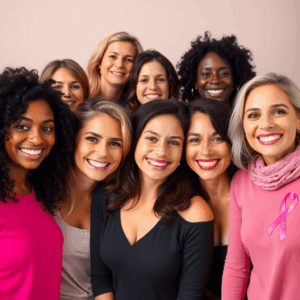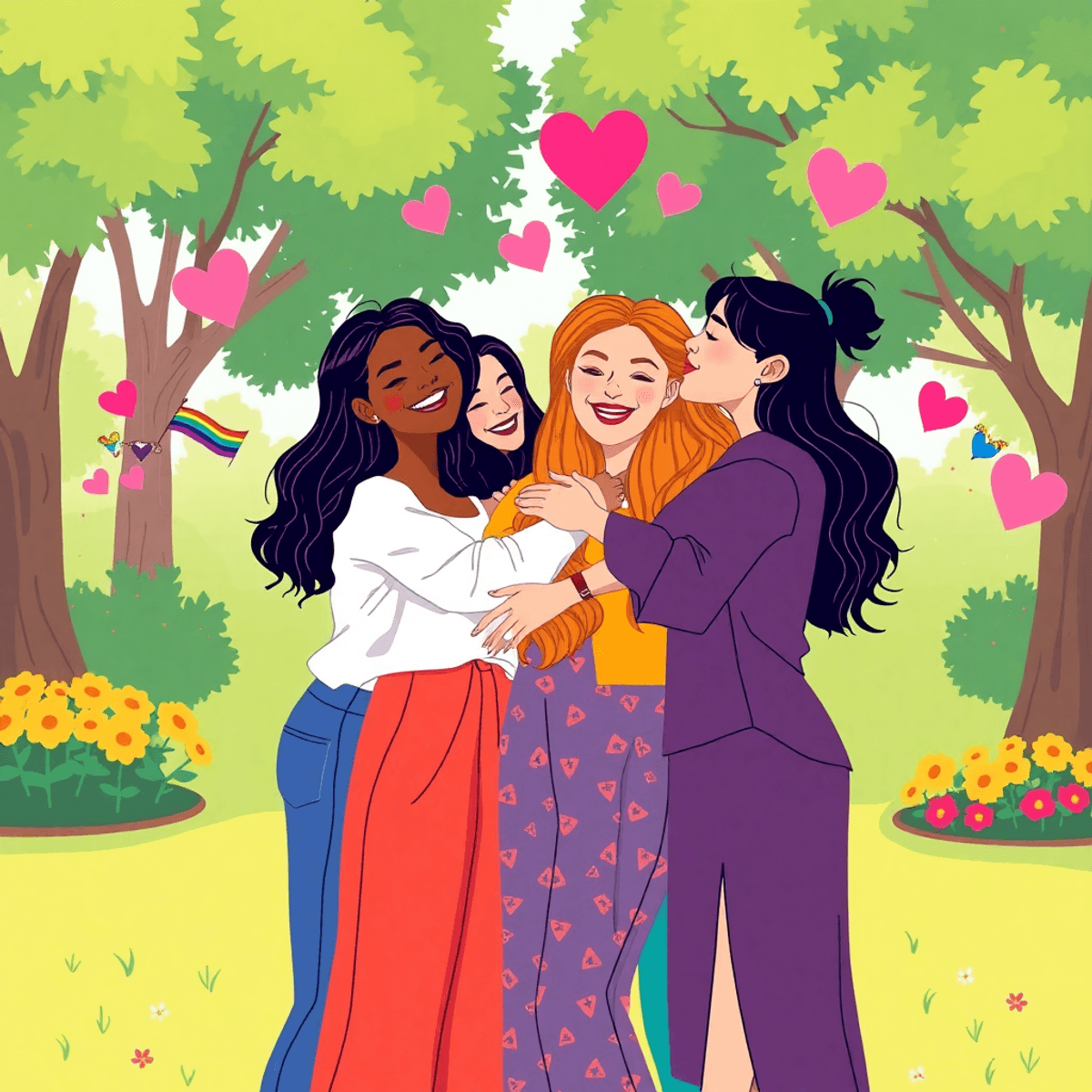Introduction
Understanding why women become lesbian requires a deeper look into women’s sexual orientation. Sexual identity is not just a simple concept but rather a wide-ranging one that includes various attractions and relationships. This complexity is especially true in women’s experiences, where the limits of attraction are often more flexible.
Knowing why women identify as lesbian is important for promoting acceptance and understanding in society. It challenges stereotypes, encourages inclusivity, and empowers individuals to live authentically. By examining the many reasons behind lesbian identity, we can better understand the different journeys women take in discovering their sexuality.
The complexities of sexual identity include factors such as emotional connections, societal influences, and personal experiences. These elements work together to shape how women see themselves and their relationships. As you explore this topic, think of it as an opportunity to engage with the larger conversation about human sexuality. By doing so, you help create a world that respects each person’s right to define their own identity.
The Fluidity of Sexual Orientation in Women
Understanding the concept of fluid sexuality is crucial when exploring why some women identify as lesbian. Women’s sexual orientation often exhibits more fluidity than men’s, meaning their attractions can shift across different life stages. This inherent flexibility in sexual identity allows women to explore and redefine what attraction means to them over time.
Explanation of Sexual Fluidity in Women
Sexual fluidity refers to the capacity for one’s sexual attractions to change due to various internal and external factors. For women, this fluid nature means that their romantic interests might not be fixed but can evolve throughout their lives. This phenomenon is supported by numerous studies indicating that women’s sexual orientation is not strictly binary; instead, it exists on a spectrum where shifts are common.
Research Findings on Changing Attractions
Several research studies have highlighted these shifts in attraction among women. A notable study by Dr. Lisa Diamond revealed that many women experience changes in their sexual preferences and behavior over time. Data from this research shows that women’s attractions can vary due to personal growth, emotional experiences, or evolving social environments.
Life Events Influencing Shifts in Sexual Orientation
Various life events have been noted to influence shifts in sexual orientation among women:
- Major Relationships: Engaging in significant relationships, whether heterosexual or same-sex, can lead women to reassess their attractions.
- Personal Milestones: Events such as childbirth or divorce often prompt introspection and exploration of one’s sexual identity.
- Cultural Exposure: Experiencing different cultural settings or societal norms may encourage women to explore diverse aspects of their sexuality.
These examples underscore how life experiences play a pivotal role in shaping and reshaping women’s understanding of who they are attracted to. Recognizing this fluidity provides insight into the complex tapestry of human sexuality, helping us appreciate the dynamic nature of attraction and identity among women. Furthermore, research indicates that sexual fluidity is not only a personal journey but also reflects broader societal changes in understanding and accepting diverse sexual orientations.
Late-Blooming Lesbians: Coming Out Later in Life
Many women identify as lesbian after years of being in heterosexual relationships. This phenomenon, often referred to as “coming out later in life,” highlights the complex journey of self-discovery that some women experience. The reasons behind this late identification are varied and deeply personal.
Factors Contributing to Late Discovery
Several factors contribute to the late discovery of one’s sexual orientation:
- Societal Expectations: Many women initially follow traditional societal norms, entering heterosexual relationships due to cultural or familial pressures.
- Personal Realization: Life events such as divorce, the death of a spouse, or children leaving home can prompt introspection, leading to revelations about one’s true sexual orientation.
- Lack of Role Models: Historically, the absence of visible lesbian role models may have delayed the recognition and acceptance of same-sex attraction for many women.
Personal Accounts and Statistics
Personal stories often illustrate this journey of self-discovery. For instance:
“I was married for 20 years before I realized that my emotional and romantic attractions were towards women,” shares a woman who came out in her fifties.
Statistics reveal similar trends:
- A study by Lisa Diamond found that approximately 60% of women reported changes in their sexual orientation over time.
- Surveys indicate that a significant number of women identifying as lesbian do so after age 40, showcasing the prevalence of late-blooming lesbians.
Understanding these narratives not only enriches our comprehension of sexual orientation but also emphasizes the importance of allowing individuals the freedom to explore and express their identities at any stage in life. This exploration is further supported by research into sexual orientation, sexuality, and gender, which provides valuable insights into the complexities surrounding these topics. Furthermore, studies have shown that sexual fluidity is a common experience among many individuals, further illustrating the non-linear nature of sexual orientation discovery.
Emotional Connections and Attraction Between Women
The question “Why do women become lesbian?” often leads to an exploration of the profound emotional bonds that can form between women. Unlike relationships that may predominantly focus on physical attraction, many same-sex relationships are deeply rooted in emotional connections. These bonds often serve as the foundation for a significant portion of women’s same-sex attractions.
Emotional Bonds vs. Physical Attraction
In many same-sex relationships, emotional bonds take precedence over physical attraction. These bonds evolve from shared experiences, mutual understanding, and deep empathy. Such relationships can be life-saving, providing a sense of security and support that is invaluable.
While physical attraction is certainly present, it is the emotional intimacy that often defines the relationship dynamics between women. This aspect can be particularly compelling for those who find fulfillment and validation through such connections. Vulnerability in relationships can strengthen these emotional ties, creating a deeper sense of connection.
Case Studies Highlighting Emotional Connections
- Anna and Maria’s Story: Anna describes her relationship with Maria as one founded on an unparalleled emotional bond. Having been friends for years, their connection gradually evolved into a romantic partnership characterized by trust and shared values.
- Lisa and Sarah’s Experience: For Lisa and Sarah, their relationship began with a strong sense of mutual support during challenging times. The emotional depth of their friendship naturally transitioned into a romantic relationship, highlighting the profound impact of an emotional foundation.
In exploring these dynamics, it’s clear that for many women, the attraction to other women often transcends mere physicality. It is about finding someone who resonates on a deeper level emotionally—building a partnership based on understanding and shared experiences.
Understanding these aspects provides insight into how emotional connections play a crucial role in shaping women’s sexual orientation towards same-sex attractions. The complexity of these relationships illustrates how strong emotional bonds can lead to fulfilling partnerships that align with one’s identity and desires. It’s essential to recognize that these emotional connections not only influence sexual orientation but also play a vital role in overall well-being, as seen in various studies exploring the impact of such relationships on mental health and personal fulfillment (source).
Cultural and Social Influences on Women’s Lesbian Identity
The landscape of women’s sexual identity has been significantly shaped by cultural changes and societal acceptance. As societies evolve, the perception and expression of sexual orientation among women have undergone notable transformations.
Impact of Cultural Changes
1. Cultural Shifts
Over recent decades, there has been a noticeable shift in how cultures worldwide perceive and discuss sexuality. These shifts have contributed to a broader understanding and recognition of diverse sexual orientations. For many women, these changes provide the opportunity to explore their identities more freely and openly.
2. LGBTQ+ Visibility
Increased visibility of LGBTQ+ individuals in media, politics, and public life plays a crucial role. It normalizes same-sex relationships and provides role models for women who are questioning or embracing their lesbian identity.
Increased Acceptance and Exploration
Societal acceptance has grown significantly, allowing more women to feel comfortable identifying as lesbian or bisexual. This acceptance reduces the stigma associated with coming out and exploring same-sex relationships:
- Visibility Campaigns: Initiatives promoting LGBTQ+ rights have amplified voices from the community, fostering an environment where sexual orientation is viewed as a spectrum rather than a binary.
- Supportive Communities: The formation of supportive communities both online and offline helps women connect with others who share similar experiences, encouraging exploration without fear of judgment. Platforms like Taimi offer the best lesbian dating app for those seeking to connect with others in the community.
Historical Context
Understanding the historical context is essential when discussing current societal attitudes:
- Past Taboos: Historically, same-sex relationships were often stigmatized or criminalized in various cultures. This created barriers for many women who might have otherwise identified as lesbian or bisexual.
- Progress Over Time: While taboos still exist in some areas, significant progress has been made globally. Legalization of same-sex marriage in numerous countries exemplifies this shift towards equality and acceptance.
Cultural and social influences continue to play a pivotal role in shaping how women understand their sexual identities. As societies become more inclusive, the potential for personal discovery expands, offering new pathways for self-expression and acceptance within the lesbian community.
Feminism, Gender Norms, and Women’s Exploration of Sexuality
Feminist movements have played a significant role in transforming the landscape of women’s sexual exploration and understanding. By advocating for gender equality and challenging patriarchal systems, feminism has encouraged women to question traditional gender roles and embrace their authentic selves. This shift in perspective allows women to explore their sexuality without the constraints imposed by societal norms.
How Feminist Movements Influence Sexual Exploration:
- Questioning Traditional Norms: Feminist theories challenge the status quo by questioning the rigid gender roles traditionally assigned to men and women. This has prompted many women to reconsider their own sexual identities and the expectations surrounding them.
- Creating Safe Spaces: Feminism has contributed to creating environments where women can openly discuss and explore their sexuality. This support system empowers women to embrace same-sex relationships if they find them fulfilling.
Challenging Gender Roles in Same-Sex Relationships:
- Breaking Stereotypes: In same-sex relationships, traditional gender roles are often redefined or entirely discarded. Women are free to express themselves without adhering to conventional expectations. This freedom can lead to more satisfying partnerships based on mutual respect and understanding.
- Equality in Relationships: The absence of predefined roles allows for a more equitable distribution of responsibilities and power dynamics within relationships, fostering healthier connections.
Empowerment Through Same-Sex Relationships:
- Self-Discovery: Engaging in romantic partnerships with other women can be an empowering experience, offering new insights into one’s desires and needs. This journey of self-discovery is often liberating for those who have felt constrained by heteronormative expectations.
- Community Support: The feminist community provides a robust support network for women exploring same-sex love, reinforcing the idea that personal happiness and autonomy are paramount.
This section highlights how feminism not only supports women’s exploration of sexuality but also empowers them to pursue meaningful relationships that align with their true selves.
Personal Stories: From Heterosexuality to Embracing Same-Sex Love
Exploring personal narratives reveals the diverse paths women take in transitioning from heterosexual relationships to embracing same-sex love. These stories often highlight a journey of self-discovery, where individuals navigate complex emotions and societal expectations.
Dissatisfaction with Traditional Gender Dynamics
Several women recount experiences with men that led them to question heteronormative dynamics. Common themes include:
- Lack of Emotional Fulfillment: Many women describe feeling emotionally unfulfilled in heterosexual relationships, seeking deeper connections that they ultimately find with other women.
- Desire for Equality: Traditional gender roles often leave women feeling constrained. In same-sex relationships, there is often a perception of more equitable partnerships.
- Authenticity and Self-Acceptance: Some women express a profound sense of authenticity when embracing their same-sex attractions, stepping away from societal pressures to conform to heterosexual norms.
Stories of Transition
One compelling story involves Sarah, who after years in a traditional marriage found herself drawn to a female colleague. She describes this transition as an awakening, finally understanding her dissatisfaction stemmed from a mismatch between her inner self and her external life.
Another narrative comes from Emily, who recounts her gradual shift in attraction during middle age. Her journey emphasizes the fluidity of sexual orientation, illustrating how life stages can prompt reevaluation of one’s identity.
These stories underscore the complexity behind the question, “Why do women become lesbian?” They reveal how personal experiences, combined with evolving emotional needs and societal shifts, contribute to women’s decisions to pursue same-sex love. Each narrative adds depth to our understanding of sexual identity as an intricate tapestry woven from individual experiences and broader cultural influences.
Recognizing these personal journeys offers valuable insights into the multifaceted nature of sexual orientation and highlights the importance of acceptance and understanding in today’s society.
Conclusion
Understanding the question, Why do women become lesbian?, reveals a tapestry of multifaceted reasons for lesbian identity. Sexuality, particularly among women, is a complex and dynamic spectrum influenced by a variety of factors.
- Fluidity of Sexual Orientation: Women’s sexual identities are not static; they can evolve due to emotional connections, life events, or societal influences. This fluidity underscores the non-binary nature of attraction and identity.
- Cultural and Social Influences: As society progresses towards greater acceptance, women feel more empowered to explore and express their true selves without fear of judgment.
- Personal Experiences: Many narratives highlight how personal dissatisfaction with traditional gender dynamics in heterosexual relationships can lead to a profound exploration of same-sex love.
The journey to understanding women’s sexuality must be met with an open mind and heart. Recognizing the diverse experiences that shape each individual’s path encourages acceptance and empathy. Embracing these identities contributes to a richer, more inclusive society where everyone feels validated in their authentic self. This acknowledgment fosters a world where all sexual identities are celebrated, offering support and understanding to those navigating their unique journeys.
FAQs (Frequently Asked Questions)
Why do women identify as lesbian?
Women may identify as lesbian for a variety of reasons, including emotional connections with other women, personal experiences, and societal influences. Understanding these factors helps to appreciate the complexity of women’s sexual orientation.
What is sexual fluidity in women?
Sexual fluidity refers to the capacity for a woman’s sexual attractions to change over time. Research has shown that life events and changing circumstances can significantly influence a woman’s sexual identity throughout different stages of life.
What does it mean to be a late-blooming lesbian?
Late-blooming lesbians are women who come out as lesbian later in life, often after having spent years in heterosexual relationships. Factors contributing to this late discovery can include societal pressures, lack of self-awareness, or evolving personal insights.
How do emotional connections affect attraction between women?
Emotional bonds play a crucial role in attraction among women. Many same-sex relationships are characterized by deep emotional connections that may surpass physical attraction, leading to unique relationship dynamics.
What impact do cultural and social factors have on women’s lesbian identity?
Cultural shifts and increased societal acceptance significantly influence how women identify as lesbian or bisexual. Greater visibility and acceptance within society encourage more women to explore and embrace their same-sex attractions.
How have feminist movements influenced women’s exploration of sexuality?
Feminist movements have empowered women to challenge traditional gender roles and explore their sexuality more freely. This empowerment has led many women to pursue romantic relationships with other women, redefining their understanding of love and partnership.
Written by
Joshua Gonzales
You may also interested in:

What does the Bible say about lesbian women?
Explore what the Bible says about lesbian women, focusing on scripture, context, and distinctions between attraction and behavior.
Why are straight women obsessed with lesbian TikTok?
Explore why straight women are drawn to lesbian TikTok, from curiosity and identity to authentic connections and community support.
